I have no business being a food writer.
I don’t have any culinary training. I’ve never worked in a commercial kitchen. I’m not a journalist, and I’m certainly not a historian or expert on any particular subject matter.
At best, I’m just a guy—albeit one who loves to cook, loves to eat, and loves to write.
Still, it was inevitable that I’d end up writing about food. The stories are just too good to pass up.
There’s a frustratingly-persistent trope on the internet these days, a snide dismissal of overly-verbose introductions to recipes. You know the one; heck, there’s a chance you’ve said it yourself. “I just want the recipe, I don’t need your life story.”
It grates on me, and not just because I’ve posted hundreds of recipes on the internet myself.
(In fact, I’ve got a whole archive of them, freshly-updated!)
No, it’s a rude and entitled attitude, but it’s also one that completely misses the point: recipes are stories, and to reduce them to a list of ingredients and steps is to deprive yourself of the chance to understand our world and each other a little bit better.
I’ve been thinking about this the past few weeks as I’ve read through
’s wonderful new cookbook, Baking in the American South: 200 Recipes and Their Untold Stories.(REMINDER: I will be joining Anne in conversation at Louisville’s Carmichael’s Bookstore, 2720 Frankfort Avenue, this Thursday evening, November 14th, at 7pm!)
The book’s loaded with recipes for all sorts of great things—cornbreads, biscuits and rolls, puddings, pies and cakes, cookies and frosting and more—but even if you never bake a single thing from it, it’s a fascinating read. These recipes aren’t just instructions, they’re the stories of the American South, an oft-maligned and misunderstood place with a rich history and tremendous diversity to share.
I don’t have the kind of knowledge and expertise that Anne does, but that doesn’t mean I’m not trying to tell a story here, too. Sharing recipes can be about so much more than just making a meal—it can be a way to bridge divides, learn about each other, and conjure up the past in the present day.
In that spirit, I’d like to share a little bit of myself, through a handful of recipes.
They’re not groundbreaking, but they’re ones that mean something to me. If you’re willing, I’d love to hear about ones that mean something to you, too.
Here’s mine.
My grandparents’ backyard
It’s not summer without Hot Sauce.
I don’t remember the first time I ever tried it; it’s just always been there, a recipe as elemental as peanut butter and jelly or chicken noodle soup. I served it to my kids when they were barely past sippy-cups.
Oh, I should probably explain.
Hot Sauce isn’t hot sauce; it’s not a condiment.
It’s more of a soup—a rustic gazpacho from a recipe that first originated with my great-grandfather more than 75 years ago, a vehicle for the late-summer bounty of a backyard garden. It’s been handed down from one generation to the next with little variation other than the level heat applied.
(When I made it for my kids, thus extending its run to five generations, I included only a ceremonial amount of hot pepper. I needed to ease them in.)
I only make it once a year, in late July or early August when the tomatoes and peppers are just right; it wouldn’t taste right with store-bought. Each time I do, I’m right back there in Grandma and Grandpa Hines’ backyard in Connellsville, Pennsylvania.
A community cookbook
I’ve made a running bit over the years out of my semi-ironic embrace of Cincinnati-style chili, one of the internet’s most divisive dishes.
(To be clear: I do genuinely enjoy it, but I talk about it to get a rise out of people.)
It wasn’t until a few years ago that I put two and two together and realized that I might be predisposed to enjoy it because I’ve been eating pastitsio—a Greek dish with pasta, cheese and similarly-spiced beef in it—for most of my life.
It’s as treasured a family recipe as we have, something my brother and I would request for Christmas Eve dinner each year, a tradition I’ve successfully ported over to my own children. (My brother has with his, too.)
The thing is, though… we’re not the least bit Greek. Sometime in the 1980s, my mother picked up the recipe from a Jaycee Women’s cookbook, everyone liked it, and it just stuck. I’m a notorious kitchen experimenter, but I don’t dare mess with the recipe.
It might not have started out as a family recipe, but it’s sure one now.
A cooking show
College dining halls these days seem like pretty fancy places.
They weren’t twenty years ago, and even if they had been, the dorms at the University of Cincinnati were lousy enough back then that I didn’t stay on campus any longer than I had to. I moved into a series of ramshackle off-campus apartments, and quickly realized that if I didn’t want to subsist entirely on Chipotle, Penn Station, and Thai Express, I was going to have to learn how to cook.
For a couple years, this mean chicken breast cooked on a George Foreman Grill and slathered with Sweet Baby Ray’s barbecue sauce.
Then I started watching the Food Network.
Now, Rachael Ray isn’t the kind of chef who gets celebrated in food writing much, but her food seemed easy enough, accessible to a college kid with little more in his kitchen than a pot, a can opener and a couple of dull knives.
(Also, I had a crush on her.)
After watching for a while, I attempted one of her recipes—a pumpkin-and-black-bean soup that mostly involves opening cans—and halfway through, I was certain I’d screwed it up. I stayed the course, and as if by magic, it came together and… it was good! I’d made a real meal, and it was good!
Some two decades later, I’m a much more skilled cook, and I’ve got an arsenal of kitchen tools at my disposal. I’m still fond of the recipe, and I’ve taken my own, slightly-more-complex spin on the flavor combination.
A tiny New York apartment
My wife is from Indiana, but she grew up around horses, which means that she’s also a little bit from Kentucky.
We first met in New York, a couple of Midwestern kids who’d each moved east after college, drawn by the lure of bright lights and the big city. We bonded over our shared touchstones, fell in love, and moved into a tiny Brooklyn apartment where we immediately set to hosting as many people as we could.
Our signature move was throwing a Kentucky Derby party.
Even if you’re indifferent to horse racing, the Derby’s the perfect excuse for a party. It’s a chance to dress nice (if a bit silly), drink bourbon and make merry, and the ostensible focal point of the event only takes two minutes. It’s a lot like New Year’s Eve in that regard, except that it happens on a Saturday afternoon in May and not the middle of the night in winter.
The Derby party scene here in Louisville (where we now live, mostly by coincidence) might be competitive, but in New York? We could pack a crowd in a 500-square-foot apartment.
The centerpiece of these parties—aside from the bourbon, of course—was always a pie. I’d call it by its name, but Louisville’s Kern’s Kitchen owns the trademark, and they’re notoriously litigious about it. Let’s just call it a Kentucky Horse Race Pie.
The traditional version calls for walnuts, but we both prefer pecans, and though she always insists her homemade crusts aren’t quite right, they’re always spectacular.
A little newsletter that could
I didn’t start The Action Cookbook Newsletter to be a food blog.
Heck, the name is a coincidence—an online handle I’d picked to be a purposeful non-sequitur, a reference to a 1960s cookbook I’d heard in passing on a television show. This was originally a sports blog, at least for the first few months, but I got tired of only telling other people’s stories; I wanted to tell my own.
I started sharing some of my kitchen experiments, and people responded well; as a parent of young children who wasn’t getting out as much as I once did, it felt good to bond over my culinary flights of fancy.
One day in 2019, I got a notion—I’d combine two dishes I loved into one.
First, the Breaded Pork Tenderloin sandwich, another thing I picked up from the Indiana girl. (She’d shank me if I called her a Hoosier. She’s a Boilermaker.) I’d take that comically-flattened fried pork cutlet and give it the Nashville Hot Chicken treatment, a marriage of regional dishes I dubbed the “Kentuckiana Hot Loin”.
That was five years ago (I refined the recipe four years ago, that’s the version linked above), and since then literally hundreds of people have reached out to me with pictures of KHLs they’ve made—the perfect thing to cook when your spouse or partner’s out of town. It’s a silly recipe, sure, but it’s a delicious one (if a bit heartburn-inducing).
It’s also a great way to start a story.
So, there’s this guy I know online…
—Scott Hines (@actioncookbook)

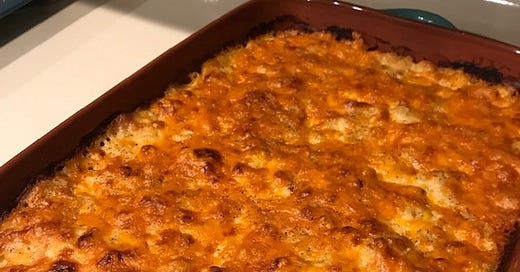

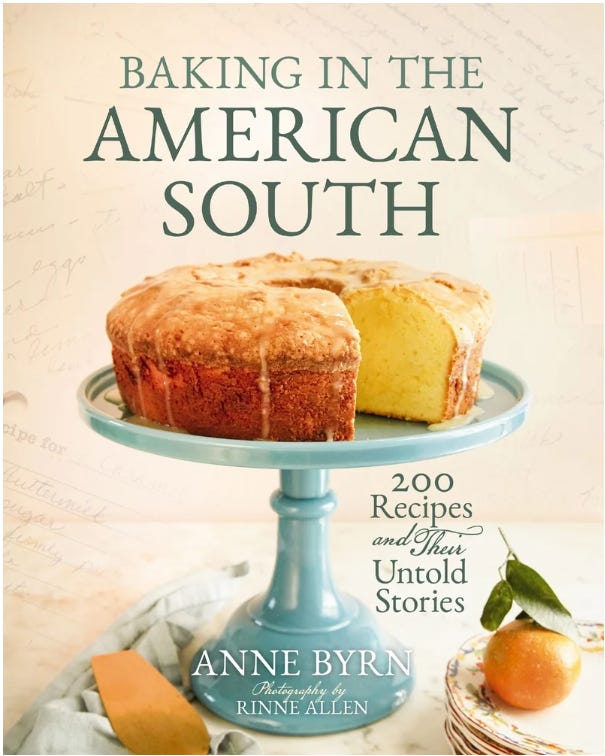
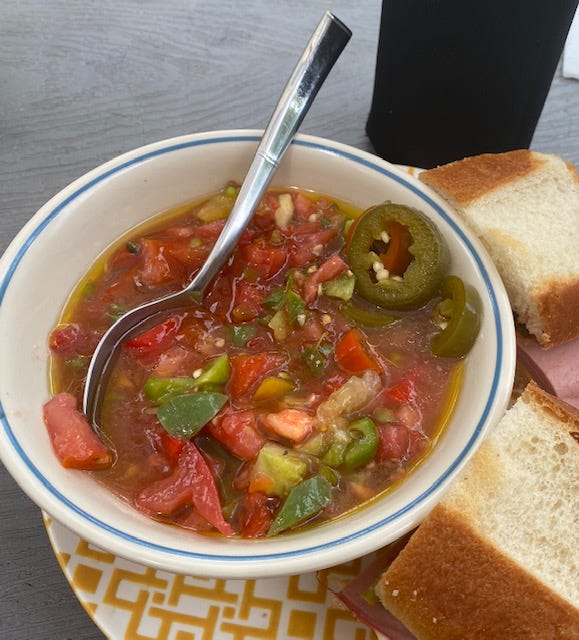




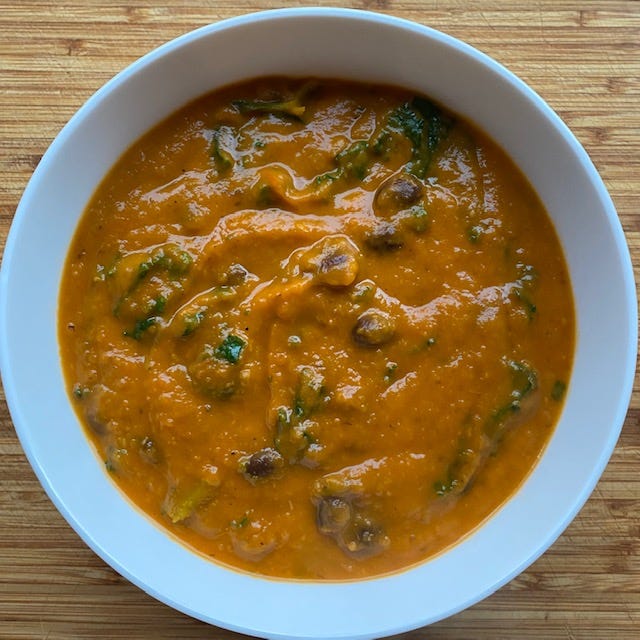

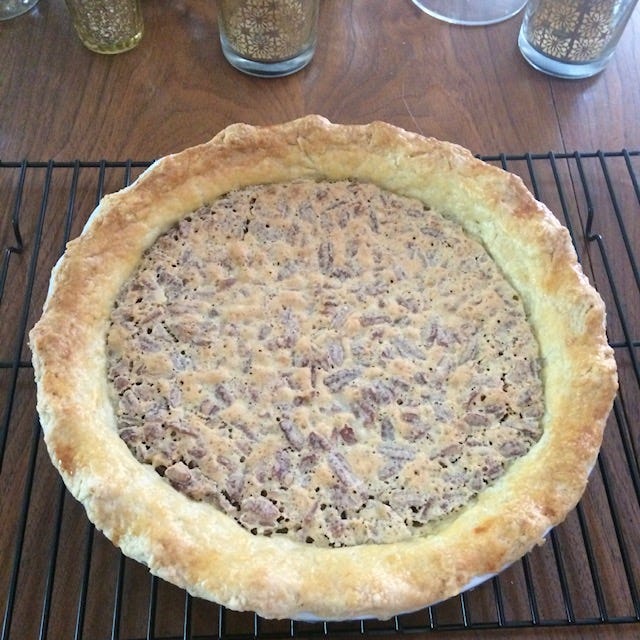

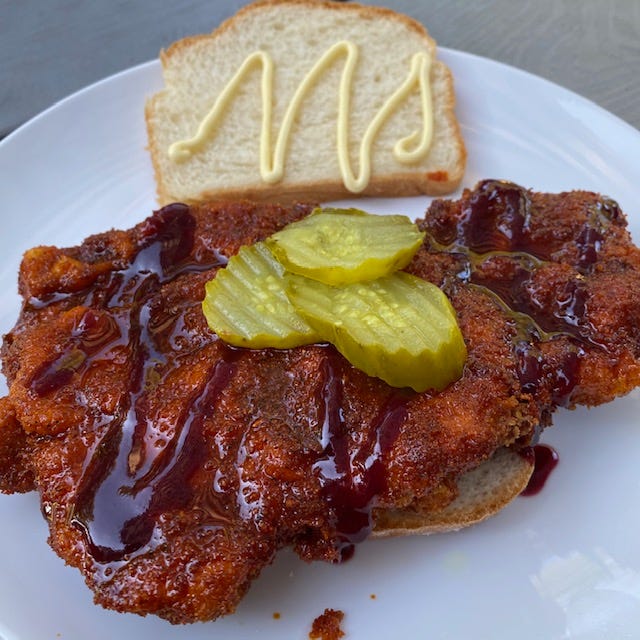

I alluded to this in the post, but I spent some time this weekend getting the recipe and cocktail archives back up to date -- that's every dish and every drink featured in previous ACBN Friday Newsletters, nearly 200 of each:
https://actioncookbook.substack.com/s/recipes
https://actioncookbook.substack.com/s/cocktails
Just before the hellscape that is 2020 set in, the Great State of Maine was preparing for its bicentennial and some noble folks thought it would be a great idea to create a statewide community cookbook that drew from all 16 counties in the Pine Tree State.
My grandparents (on my dad’s side) grew up in Aroostook County which is waaaaay at the top of the state (specifically Fort Kent and Eagle Lake), but after WWII grandma and grandpa moved to Connecticut which had a large French Canadian population and thankfully, grandma kept her cooking roots. Years later, growing up in Southern Maine we’d make the trip to CT every month or so - we’d get to their house just around dinner time and there’d be a platter on the table waiting for us: C’est Pot - an Acadian chicken and dumpling meal with a stack of ployes (a savory buckwheat crepe/pancake that was instrumental in sopping up the sauce left behind). This meal was a favorite of the lumber camps grandpa worked in prior to the war and it was clear why. It suck with you and kept you full for most of the day.
Fast forward to 2019: we’re mourning the passing of Grandma and I see the call for recipes to the community cookbook. I submit the recipes and give a background about them and now when meal is served, it’s like a warm embrace from them.
The recipe is selected for the book and now it sits on page 143 of the Maine Community Cookbook: Volume 1.